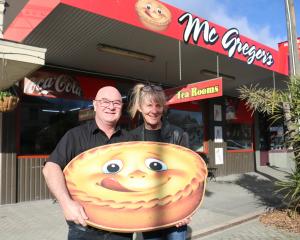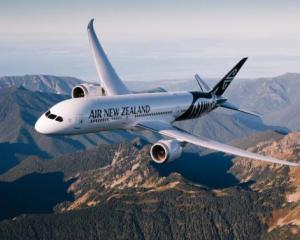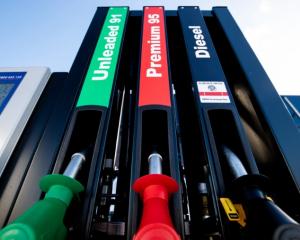
New Zealand's economic exclusion zone covers 12 nautical miles from the shore to 200 nautical miles offshore, but the Resource Management Act stops at 12 miles and the Continental Shelf Act of 1964 offers only limited interpretation for protection, with an amendment in the Crown Minerals Act 1991 for petroleum not relevant to seabed chimneys and mounds.
While preliminary exploration of the "seafloor massive sulphides" (SMS) resource is already under way, legislation for managing the effects of activities should be in place before any large-scale operation is ready to begin, likely covered in new legislation being drafted by the Ministry of Environment.
Any proposed mining operations beforehand would have environmental conditions applied.
UK-listed on the Alternative Investment Market board, Neptune Minerals has about 63,500sq km of permitted seabed in the Kermadec area, which is part of the volcanic Pacific Rim of Fire stretching towards Asia, with its head operational office in Sydney and another in Wellington.
Neptune's New Zealand country manager Campbell McKenzie said the plumes from active chimney vents belched metal-rich sediment.
Temperature ranges to an extreme of 350degC-400degC and combined with the acid richness would com-plicate mining at depths of about 1300m-1500m.
"We made a conscious decision to target only inactive chimneys. They have a lower bio-diversity and conservation risk and do not support the biota that live in the active venting systems," he said.
The SMS are active or extinct 1m-15m high chimneys which have formed over seabed fractures over hundreds of thousands of years.
The sediment from the chimneys' "smoke" or plume has settled to become mounds around the chimneys, ranging in size up to several football fields and up to 50m high, with the consistency of broken coal.
Mr McKenzie said Neptune's next phase was to confirm by the end of the year the schedule to deliver "rock on deck" from chimneys and mounds for more detailed metallurgical analysis, and then to go to the market to raise cash from investors.
"Based on those results, Neptune would then seek more funding, possibly in the form of a joint venture operation, and spend the following two years defining a portfolio of SMS targets," Mr McKenzie said.
While the prize sounds alluring, the exploration and mining set-up costs are considered a high cash-burn situation, but the rewards of getting the mineral-rich deposits are potentially exceptional on a per tonne basis, at up to $US2000 ($NZ3000).
The concept, though unsuccessfully explored in the 1970s with companies looking for manganese nodules 6km deep in the Pacific Ocean, remains new and to date minerals have not been commercially produced from any seabed chimneys internationally.
Mr McKenzie said the mining operation itself could cost $US500 million-$US550 million and Neptune was in discussion with several companies about potential mining systems.
The ore body extraction would likely include the use of a grab bucket suspended from a ship and also a mobile seabed excavator, emptying into a seabed crusher and grinding ore to the size of gravel.
The resulting slurry would be vacuumed into floating hoses and pumped by compressed air up to the ship, where the SMS ore would be extracted from the slurry and later separated and refined ashore as a concentrate and sold for further refinement.
He estimated a tonne of ore could be landed on a ship's deck for $US160, with the mineral content worth between $US500-$US2000 per tonne.
Since 2002, Neptune has gained three exploration licences in New Zealand, covering 63,500sq km and has further applications for 85,000sq km.
Following the collection of chimney samples in 2005, Neptune last year spent about $7 million on two surveys, making sonar bathymetry observations from a surface vessel and also from a remote operated vehicle.
"All these cruises had Niwa biologists on board collecting environmental baseline date," Mr McKenzie said.
Within Neptune's permitted area in the Kermadec Arc, which forms part of the Pacific Rim of Fire, New Zealand researchers have previously identified 12 seabed mounds, of which seven are hydrothermally active.
Further north in the arc at Monowai are more than 40 seamounts, plus inactive deposits in the Colville sector.
Working in parallel, but separate to Neptune in the Kermadec Arc, is Nautilus Minerals, which holds exploration licences for more than 360,000sq km in the territorial waters of Papua New Guinea, Fiji, Tonga and the Solomon Islands and is looking for SMS.
Nautilus has a pending application permit for New Zealand.
Neptune, whose shareholders include Newmont Mining Corp, which holds a 10.62% stake, is at present auditing its accounts for the year to June 2008, but the previous year booked a loss of 877,000 ($NZ2.31 million) - having 10.4 million in assets, including 5.9 million in cash.
Neptune has also been granted, or applied for, offshore exploration permits in Italy, Japan, Micronesia, Mariana Islands, Palau, Vanuatu and Papua New Guinea.
FACTS
"Seafloor massive sulphides" typical mineral content:
• Up to 20g of gold per tonne.
• Up to 1200g silver per tonne.
• Up to 15% copper content.
• Up to 59% zinc content.
• Up to 23% lead content.











